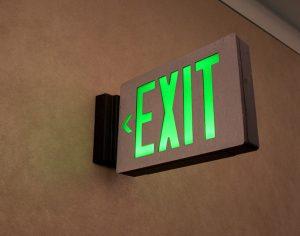When a shareholder wants to exit the business it can be a minefield. Helen Curtis, corporate partner at law firm Devonshires looks at the options.
When a shareholder wants to retire or leave the business it can create some particularly thorny issues for SMEs that often result in conflict. Unlike removing a director, there is no automatic right that can force one shareholder to sell their shares. Consequently, many issues can arise that end in a dispute. The good news is that if all parties are in agreement there is a fairly straightforward, if slightly technical, way of resolving this issue. A mechanism known as a share buyback is the best way of dealing simply with a potentially difficult situation.
What is a share buyback?
A share buyback is a procedure which allows a company to purchase their own shares from an existing shareholder. This avoids the remaining shareholders having to dip into their own capital to fund the buyback. The rules around this are a little complicated so it is advisable to get legal advice. However, fundamentally if all parties agree then this is a good option for SMEs. If the company is in profit then cash that would have been used for dividends can be used to fund the buyback. This is a much better option than taking dividends and then buying the exiting shareholder out as it is a lot more tax efficient.
A share buyback requires a shareholder resolution and there are strict time limits set out in section 18 of the Companies Act. The reason that this is quite strict is to prevent company shareholders from defrauding creditors and draining the company of money before it goes into liquidation.
It is also necessary to inform HMRC about the buyback as it is taxed at a much lower rate than dividend payments – it can be 10% as opposed to the dividend tax rate of up to 38%. This can be done before or after the share buyback, but we would advise that it is best to do so beforehand.
Once the buyback is agreed the shareholders need to have a vote and a majority need to agree. When this has been carried out various filings need to take place at Companies House.
What happens if there is a dispute?
If an agreement can’t be reached on price or a shareholder refuses to sell, then the first thing that needs to be done is to check the company’s articles of association. It is possible to have provisions put in place where if an individual stops working for a company then the company has the right to buy their shares back. Under this arrangement all parties would have agreed a way to value those share in advance. If provisions are in place in the articles of association then the exiting shareholder’s shares can be bought back.
If this isn’t the case, then the exiting shareholder is within their rights to hold onto their shares and continue getting paid dividends. When this happens there are a number of options. The shareholders can wind up the company and start again rather than keep on paying a shareholder who is no longer working for the business.
Another is to stop paying dividends and have the shareholders take more in a salary instead. This does leave shareholders open to being sued over unfairly prejudicing the shareholder they are in dispute with.
Shareholders can dilute down the shareholder’s holding if the shareholder they are in dispute with has less than 25% of shares by issuing more shares. This again leaves shareholders open to accusations of unfairly prejudicing the shareholder they are in dispute with.
While this all sounds messy in my experience most shareholders find a way of making a share buyback happen, which allows one party to exit while the others continue to operate the business
Share via:


















































